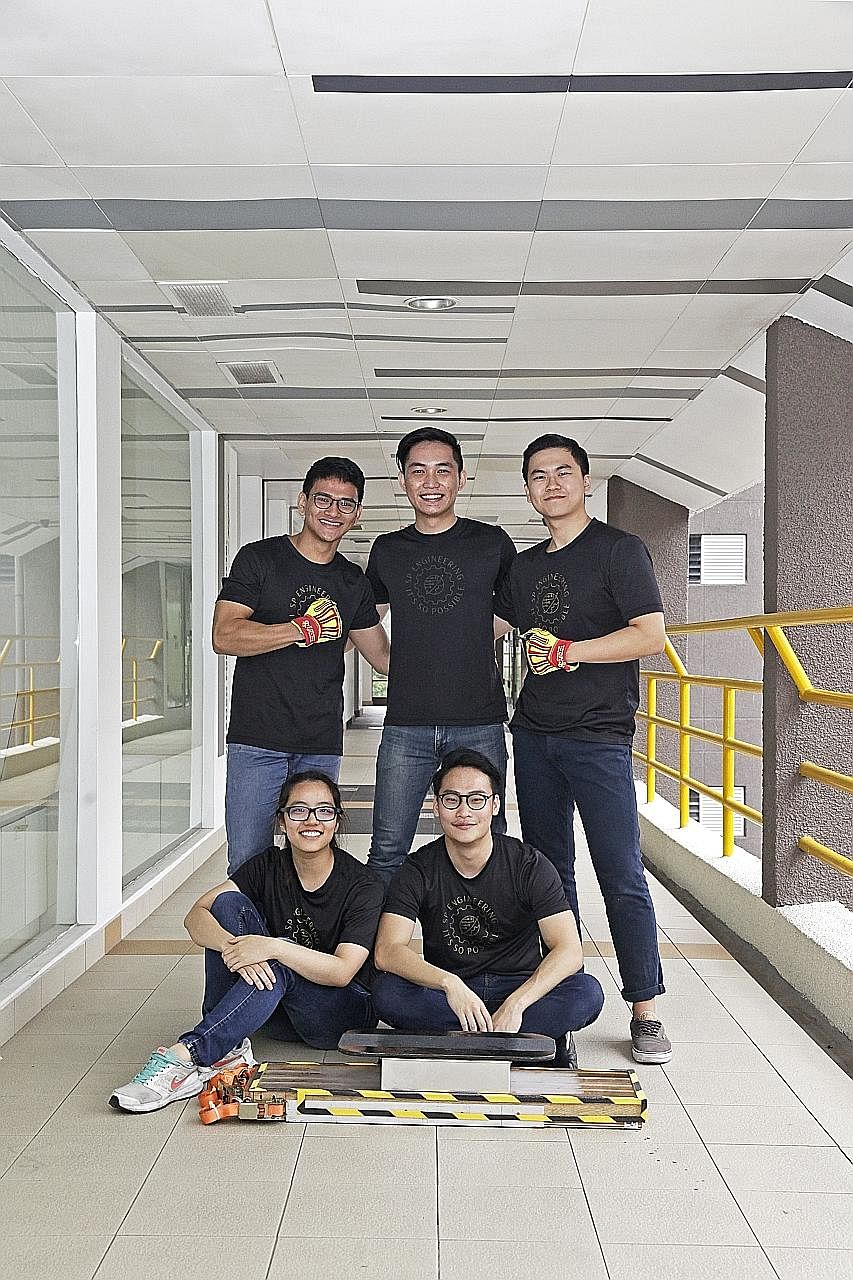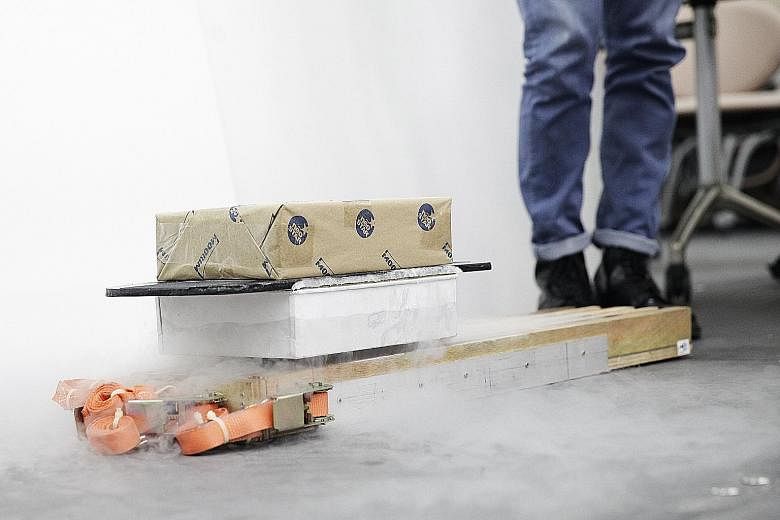Singapore could be one step closer to a levitating board that can move dishes from kitchens to diners, or deliver mail and packages in a building, among other things.
Inspired by the second Back To The Future movie from the 1980s, a team of five students from the School of Mechanical and Aeronautical Engineering in Singapore Polytechnic (SP) built a hoverboard that can levitate and move along a track.
The team, led by lecturer Leong Ying Wei, 34, comprises Mr Amos Ng, Mr Leon Kwang, Mr Chen Xiao Wei, Mr Thant Zaw Aung and Ms Lew Lin.
In the movie, protagonist Marty McFly (played by actor Michael J. Fox) uses a hoverboard to escape a gang, leading to an exciting chase on hoverboards.
For their final-year project, the team put together the hoverboard, based on the phenomenon of quantum levitation, or using quantum physics to get an object to float.
Here is how it works.

On the bottom of the lightweight hoverboard is a box consisting of six superconductors.
When cooled, the superconductors have special properties that allow them to be suspended in the air within a magnetic field.
The hoverboard is matched to a magnetic track from which it will levitate.
Liquid nitrogen cools the superconductors to minus 196 deg C, which causes the box and hoverboard to be held in place in the magnetic force field of the track.
All it needs now is a little push to get it going along the track, where there is no friction.
The product does not require electricity or combustion of any fuels, which makes it much cleaner and better for the environment, compared with the magnetic levitation technology used in bullet trains which uses much electricity, the team explained.
Since there is no friction between the board and the track, there is little wear and tear expected, so minimum maintenance will be needed.
The team also set the record for "strongest quantum levitation effect on a hoverboard" in the Singapore Book of Records.
The team could place a 70.9kg weight on their hoverboard, far exceeding the initial target of 60kg.
Said Mr Leong: "We wanted to make something that seemed impossible in the past but is possible now."
They also had many other takeaways from the project, such as the importance of teamwork and perseverance, even if they had to work outside curriculum time.
"It was a valuable experience for all of us - long but worthwhile," Mr Kwang, who is the group leader, said.
Although still a prototype, the innovation could potentially be used in industries such as transport and logistics, food and beverage, as well as recreation.
For instance, restaurants could make use of such technology to serve dishes to customers, such as at a conveyor-belt sushi restaurant.
Amusement parks could also build levitating roller coasters, increasing the intensity of the ride for thrill seekers.
The team will present the project at the annual SP Engineering Show next month to industrial partners and professionals.

